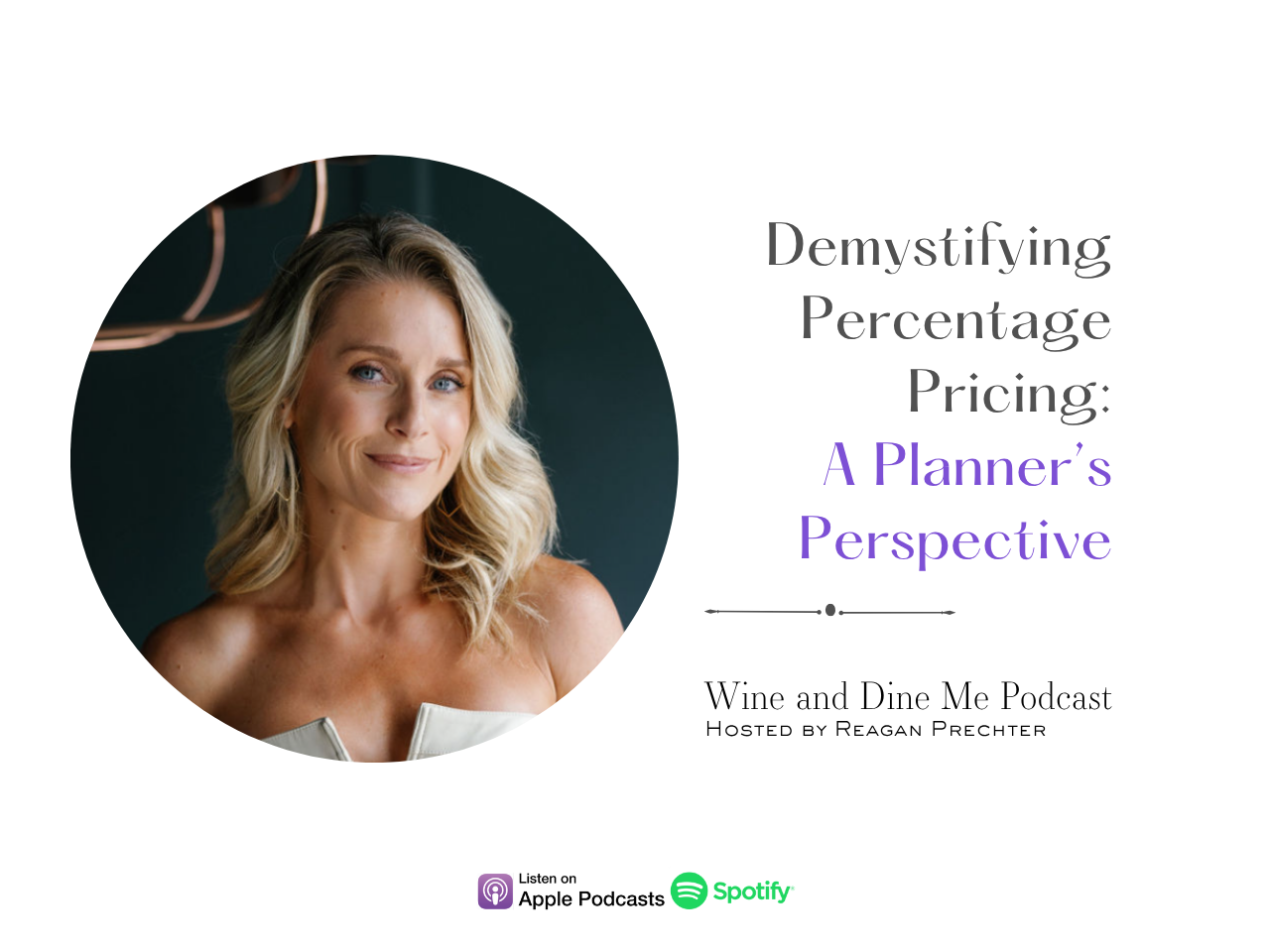Reagan Prechter
In weddings, numbers can feel as emotional as they are financial. One of the questions I hear most often — from both couples and planners — is about pricing. Specifically: why percentage-based pricing exists, whether it’s fair, and if it really protects the client.
I’ve worked on a percentage basis since I started my firm in 2012, and before that I worked under a planner who did the same. This isn’t a new concept, though it may be unfamiliar in certain markets. And because it’s misunderstood, it often stirs up unnecessary fear. Let’s unpack it.
Listen to the full episode via Spotify or Apple.
Why percentage pricing matters
Flat fees and percentage-based fees are simply two different structures. Both are rooted in the scope of the wedding. The difference is in how they respond to change.
A flat fee is set up front — no matter what evolves in the planning process. A percentage fee flexes with the scope, protecting the planner’s time and resources when the project becomes more complex.
Weddings aren’t static. Guest counts grow, design evolves, new opportunities come to light. A percentage-based structure ensures that as the work expands, the planner is compensated fairly. It’s not about inflating numbers — it’s about safeguarding the integrity of the work.
Addressing the biggest fears
The most common concern I hear is that percentage pricing “penalizes” couples with sophisticated taste or incentivizes planners to overspend. That simply isn’t true when you’re working with an experienced, transparent planner.
Your taste level is already factored in from the beginning. If you’re drawn to upholstered chairs, dramatic florals, and fine wine, a good planner will account for that in the early estimates. You’re not at Cracker Barrel ordering Dom Pérignon. You’re already in an environment where the baseline is elevated.
As for overspending — dishonest planners who inflate budgets don’t last in this industry. Longevity comes from trust, track record, and transparency.
Real-world comparisons
I often compare wedding planning to building a home. You start with a concept — maybe a four-bedroom house — and as you move through the process, you discover adjustments and opportunities you couldn’t see at the start. That doesn’t make your builder dishonest; it’s simply the reality of custom work.
The same applies to a mechanic discovering new work when you bring in your car, or a painter being asked to add rooms beyond the original agreement. No one would expect that work for free. Wedding planning should be viewed with the same respect.
It all comes down to trust
Whether you’re a planner questioning how to structure your services, or a couple navigating proposals, the core question is the same: do you value the planner you’re considering?
If the connection is strong but the percentage feels daunting, have a conversation. Many planners are willing to negotiate points or involve an associate to make the numbers work. What isn’t worth it? Walking away from the right fit over a few thousand dollars.
At its best, percentage-based pricing reflects honesty, accountability, and protection for both sides. When done transparently, it creates a fair foundation for the kind of event you’ll remember for a lifetime.
Final Thought
A wedding is not a static project — it’s a living, evolving experience. Percentage pricing recognizes that truth. It ensures that the work, the care, and the expertise are valued accordingly.
Listen to the full episode via Spotify or Apple.
If you would like to talk with us about planning your next event, HERE.
Want more behind-the-scenes stories, trends, and inspiration?
Subscribe to our newsletter for inspiration, updates, and expert advice.
Follow us on Instagram and TikTok for behind-the-scenes moments, trending ideas, and so much more.
Tune in to our Wine and Dine Me Podcast in Apple Podcast and Spotify, where we explore all things weddings, life, and business.




